#DaughtersofBilitis
Text







The Lesbian Tide formed from the Los Angeles chapter of Daughters of Bilitis because younger members of the group were looking for a place to be more radical. The Lesbian tide ran from 1971 to 1980. The publication's purpose was to be a space for Lesbians to gain political information that was relevant to them. They publicized marches and protests, bills that either worked for or against them and politicians that supported their causes. The Tide touched on topics that many other publications were afraid to do. The first photo is the 1979 July/August edition “Are Roles Really Dead?” with an inside look in the next two photos to answer just that!
#lesbian #lesbians #archives #lesbianarchives #lgbtq #wlw #westhollywood #junemazer #queer #women #community #pride #pridemonth #lesbianpride #gaypride #gay #lgbtqhistory #socialmedia #thelesbiantide #lesbiantide #magazine #periodicals #daughtersofbilitis #dob #losangeles #political #gayrights #butch #femme #collection
8 notes
·
View notes
Note
https://www.tiktok.com/t/ZTRvo1yt5/
Another addition to The Ladder info.
Yes! I read about this the other day scrolling the issues. There was a member called Phyllis Lyon who wrote and edited The Ladder under the pseudonym Ann Ferguson, then she dropped it by saying she ‘k*lled her.”


5 notes
·
View notes
Text

Lesson 91: “Picketing I regard as almost a conservative activity now. The homosexual has to call attention to the fact that he’s been unjustly acted upon. This is what the Negro did.”
Born in 1941 South Bend, Indiana, Ernestine Eckstein (neéEppenger) graduated in 1963 from Indiana University, with a BA in journalism and a minor in government and Russian. She moved to New York in 1963, where she took a job as a social worker and also became a member of CORE (Congress for Racial Equality), attracted to its mission statement of equality for all people regardless of race, creed, sex, age, disability, age, ethnicity, or (significantly) sexual orientation. It was during these years that she realized she was in fact a lesbian --a realization that had never occurred to her. She also became a member of a gay liberation organization called the Daughters of Bilitis.
Some background: before Stonewall, the mantle of gay liberation (known then as the homophile movement) was taken up by civil and political rights organizations such as Mattachine and the Daughters of Bilitis. The leadership of these organizations was almost exclusively white and traditionally reluctant to take such outright action as active picketing --with one notable exception! By 1965 Ernestine had appeared in a prominently-circulated photograph protesting homosexual discrimination before the White House, and later became the first black woman on the cover of The Ladder (the magazine published by the Daughters of Bilitis).
Eckstein soon became a leader in gay and lesbian civil rights, attending the "Annual Reminder" picket protests (and was frequently one of the only women —and the only black woman— present at these earliest LGBTQ rights protests). Ahead of her time, Eckstein was also an early advocate for the transvestite community to be included in the homophile movement. Later during the 1970s she moved to California and co-founded Black Women Organized for Action, which notably challenged the then-accepted medical notion of homosexuality being classified as a mental illness. She died at the relatively young age of 50, but her legacy is enjoying a fresh look in recent years: someone who understood that the fight for civil rights and for LGBTQ rights are intrinsically linked.
"I think Negroes need white people, and I think homosexuals need heterosexuals. If you foster cooperation right from the start, then everyone is involved and it’s not a movement 'over there.'"
#blacklivesmatter#pride#pridemonth#ernestineeckstein#daughtersofbilitis#lgbtq#intersectionalism#showup#dothework#teachtruth
2 notes
·
View notes
Text
Remembering the Lesbians in Lesbian/Gay Liberation
Remembering the Lesbians in Lesbian/Gay Liberation
By Ann Menasche
Under patriarchy, lesbians are not supposed to exist. Women - "normal" women at least - are supposed to need men to be complete, for love, for sex, for economic survival, for family, for legitimacy. In such a world, there is no place for lesbians; if a few manage to exist, they are seen as freaks or pariahs. Not surprising that we rarely appear in history or when we are named at all, we are portrayed as lonely spinsters pining after some man. (Remember the lies told about 19th century poet Emily Dickenson, who had a lifelong passionate relationship with her sister-in-law.)
In the mid-to-late 20th century, ideas of traditional womanhood began to be challenged as women as a sex gained increased independence. By the height of the Second Wave of feminism in the late 60s and 70s, lesbians had begun to emerge from the shadows and establish themselves among the leadership of the newly emerged Feminist and Lesbian and Gay Liberation Movements. And as the synergy of Lesbian/Gay Liberation and Radical Feminism freed more women to be able to pursue a lesbian life, a vibrant culture of Lesbian Feminism emerged. That culture produced socially conscious music, poetry, books, publishing houses, newspapers, feminist theatre, coffee houses, and festivals run by and for women that inspired and sustained us and helped fuel the political activism of the time. And in this environment we began to rediscover the lesbians that came before us. We no longer felt so alone.
But times have changed again and lesbians are being rendered invisible once more. Even the contributions lesbians made to the Movement for Lesbian and Gay Liberation are being forgotten. Many factors have contributed to this disappearing of lesbians from history, from our public consciousness, and often from ourselves and each other. While lesbians have won some mainstream acceptance through marriage equality, the accumulated losses have begun to be greater than the gains. Hard economic times, a conservative political climate, the growth and increased power of the Christian fundamentalist Right and a growing backlash against feminism have conspired to make lesbian existence harder once more. Independent lesbian culture has been destroyed. Even the lesbian bars that, despite their flaws, provided a place to meet and find community with other lesbians are now gone. In their place is a sense of utter isolation and despair among many lesbians. And there is often no place to turn for support except perhaps online forums.
Moreover, though the illusion that we've already won our rights is widespread, the reality is quite different. Lesbians in the United States can still lose their jobs, be disowned by their parents, lose custody of their children, and be raped or murdered for loving other women. Anti-lesbian prejudice is everywhere.
One of the most destructive influences on lesbians, which is erasing us from history and undermining the possibility of lesbian existence in the present, is gender identity ideology. As this ideology has become increasingly predominant, overwhelming our lesbian/gay communities and incorporating itself into law and culture, lesbians have felt ourselves surrounded on all sides. We are being pressured and guilt-tripped on the one hand to accept men calling themselves women into our communities and our bedrooms. At the same time, rebellious young girls with same-sex feelings, and lesbian adults are being convinced in growing numbers they are really "men" and are being coerced or swayed into "transitioning." As women’s liberation no longer appears to be a realistic goal, some of this vulnerability to the forces of transgenderism and extreme body modification may be summed up by the phrase “if you can’t beat them, join them.” How else escape the violent heavy hand of misogyny on our bodies and lives but to pass as male?
Without question, Lesbians have become extremely marginalized within the modern LGBTQ+ "alphabet soup" - the corporatized stepchild of the Lesbian and Gay Liberation Movement. LGBT centers in the name of trans-inclusion, refuse to provide space for lesbians to even meet together outside of the presence of males. We are not welcome at Pride and even the Dyke March has been taken from us by “lesbians” with male genitalia and their supporters. And as lesbians have been virtually disappeared, so has the role we played in the struggles that came before us been disappeared as well.
Our lesbian foremothers are once again gone from the history books, or are posthumously "transitioned," described as "queer," or treated merely as a footnote. But lesbians fueled the Lesbian and Gay Liberation Movement from its start. It would not have happened without us. And it is time to give credit where credit is due.
The Stonewall Rebellion on June 28, 1969 was not led by individuals identifying as transgender. Transgenderism barely existed at that time even as a concept. What existed was large numbers of lesbians and gay men, some of whom cross dressed or dressed in drag, but did not thereby deny either their sex or their homosexuality. Drag queens and butch lesbians were among those who found community at the Stonewall Inn in New York, a bar owned and operated by the mafia but one of the few places that same sex couples could dance together. Police raids were commonplace but that historic night as police dragged patrons out of the bar and beat them, one butch lesbian, Storme DeLaverie, decided she had had enough. When a police officer shoved her and called her a "faggot", she punched him in the face. Four officers assaulted her and one hit her on the head with a billy club. Bleeding from the head, and dragged toward the police van, she yelled "Why don't you guys do something?" The rebellion was on and lasted six nights. Lesbian and Gay Liberation was born.
Martha Shelley, a lesbian with strong left-wing politics, had passed by the Stonewall on the fateful night but thought she was seeing an anti-war protest. She had no idea that the people throwing rocks at the cops were gay. When she realized what she had missed, she contacted the Daughters of Bilitis and the Mattichine Society and made a proposal for them to jointly sponsor a protest march. On July 27, 1969, 200 lesbians and gays marched in Greenwich Village, in what was to become the world’s first Gay Pride Parade. The organizing committee formed itself into the Gay Liberation Front, a revolutionary group that demanded not assimilation but a complete overhaul of the patriarchal, racist, imperialist system. A new movement was launched, initiated by a lesbian.
Almost a decade later in 1978 in San Francisco another lesbian was the central leader in the successful movement to defend Lesbian and Gay Rights then under attack. This was the struggle against the attempt by Christian fundamentalists to pass the Briggs Initiative, a proposition that would have banned gay teachers and all supporters of Lesbian/Gay Rights in the schools. Though everyone knows about Harvey Milk, many giving him credit for the defeat of the Briggs Initiative, it was actually Nancy Elnor, a lesbian-feminist and socialist, someone virtually no one has heard of, who was far more responsible for that victory. I knew Nancy personally and worked together with her in the Bay Area Coalition against the Briggs Initiative. We were on and off again lovers, our personal interaction often stormy, but my admiration for her never waned.
Nancy worked long hours, doing amazing grassroots organizing work always accompanied by her German Shepherd "Bianca" and put together a mass movement that brought out tens of thousands into the streets against Briggs. She brought in organized labor and every progressive organization in San Francisco to join the cause, and chaired packed meetings of activists. The Coalition under her leadership, organized a televised debate between Milk and Sally Gearhart on the one side and Briggs and one of his cohorts on the other. A thousand people watched the debate on a big screen in a local high school auditorium. Nancy's in-the-streets movement building done through distributing thousands of flyers, making hundreds of phone calls, and attending dozens of meetings (there was no Internet) set an example for the whole state, helped change the political climate, and put us on the path to victory. Nancy died young but I'll never forget her.
As many lesbians celebrate Pride with varying degrees of ambivalence or else consciously ignore the festivities as no longer speaking to us, it is important to remember and celebrate the heroic leadership of our lesbian foremothers who changed history. If we did it once, we can do it again.
Read the full article
#BayAreaCoalition#BriggsInitiative#Christianfundamentalists#DaughtersofBilitis#DykeMarch#GayLiberationFront#GayPrideParade#GreenwichVillage#HarveyMilk#Lesbian/GayLiberation#MarthaShelley#MattichineSociety#NancyElnor#radicalfeminism#SallyGearhart#StonewallInn#StonewallRebellion#StormeDeLaverie#transgenderism
15 notes
·
View notes
Video
LGBT Trivia - Daughters of Bilitis #lgbt #gaypride #gaypride2019 #love #fun #history #instagram #daughtersofbilitis https://www.instagram.com/p/BxG3yAqhEh_/?utm_source=ig_tumblr_share&igshid=187t8xgx5uq73
0 notes
Photo

#Repost @h_e_r_s_t_o_r_y with @repostapp ・・・ ❓❔❓Are lesbians so different? The Ladder - 1967. The Ladder was the first nationally distributed lesbian publication in the United States and was published from 1956 to 1972 by the Daughters of Bilitis, the first lesbian organization in the U.S. (rg @gerberhart) #theladder #gerberhart #daughtersofbilitis #lesbianculture
0 notes
Photo

Intersectionality, Courtroom Strategy, Trans Rights… Pre Stonewall… Do you know the name Ernestine Eckstein? Be sure to check out the fantastic @makinggayhistorypodcast episode about Ernestine (interviewed for the Ladder by Kay Lahusen and Barbara Gittings in 1965). A truly great conversation about the importance of acceptance, and the state of the LGBTQIA+ movement in the time prior to Stonewall. #christopherstreet #gayliberation #riotsandrevolutions #queerhistory #queerolfaction #MakingHistory #LGBTHistoryMonth #daughtersofbilitis #annualreminder (Photos: Kay Tobin, NYPL Archives) https://instagr.am/p/CU71XIIrIxP/
0 notes
Text
10 Facts About Me
Thank you @berna-di-angelo and @epiphanicwiring for tagging me
1: This is the first time i got tagged to something like this and it made me anxious loll i’m terrible at summarizing myself
2: I like MMORPGs a lot 😊
3: I like drawing a lot 😊 and i’m learning animation
4: My phases are not phases (,mom); i mean i don’t obsess over things in an order, one by one. I collect obsessions. I am MADE by Fandomstein out of dead parts of the internet. For example when i was 12 to 15, my life REVOLVED AROUND GREEK MYTHOLOGY ((my url means daughter of Apollo in Turkish)) and as many can guess, Percy Jackson was the one who introduced me to it. I still love Percy Jackson with my life even though it’s so childish and a little time wasting. I still play the games that caused me to have serious sleep issues when i was 10 and i still listen to the emo bands that we’ve sworn an oath to leave in 2009.
5: I have a mediocre Aegean Turkish accent when I’m tired and/or angry lol. 98% of my family lives in İzmir, Turkey rn but i’m pretty mixed racially and ethnically; there are Jewish, Macedonian, Greek, Spanish, Indian and Russian parts of my family as far as i know..
6: I have a low EQ and that’s one of the reasons why i’m not sure at all about my MBTI type. Sometimes,,, when i get stuck in a Ni-Ti loop, i guess, which happens a lot, i guess,,, i prepare secret files for my friends, list the stuff like what they like and the ways i can stay in touch with them and write down psychological analysis using highlighters and all, aaand study? them idk
7: I don’t understand gender enough to label myself. I don’t FEEL like a gender or agender. Sometimes i look(?) and act(?) exactly like a boy and i’m 99.9% ok with me being a boy, but i’m 99.9% ok with me being a girl too. I like embracing the concept of being a woman who likes woman and since i don’t have an actual problem with it, i let people label me as a female which is the sex i’ve born into and confrom the visual stereotypes of.
8: I want to study landscape architecture and some kind of engineering
9: I love Iceland.
10: Umm idk my favorite movies i can think of rn are Le Fabuleux destin d'Amélie Poulain, Castaway on The Moon, Sense8: Christmas Special (yes it’s not a- shshhhh), Lilo and Stitch, Only Lovers Left Alive, Mr. Nobody, Incredibles, But I’m a Cheerleader, Hükümet Kadın, Forrest Gump, Wall-E and Ghibli movies
I’m tagging @fluorescentsound, @not-to-be-straight, @daughtersofbilitis, @fck-my-brain and whoever wants to do it
6 notes
·
View notes
Text
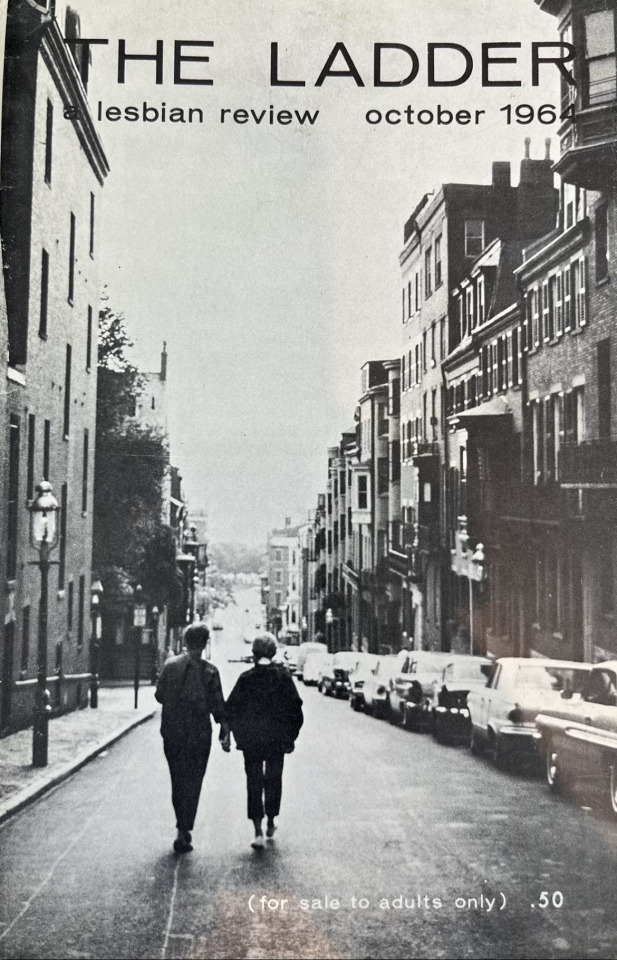
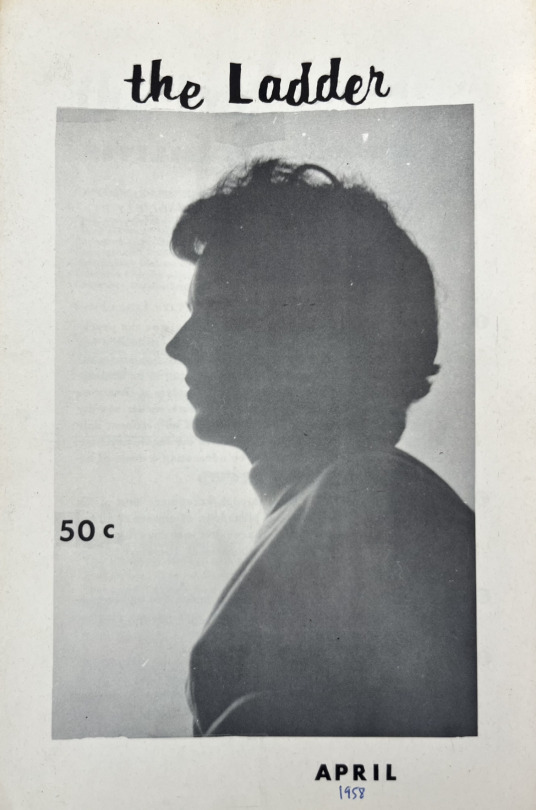


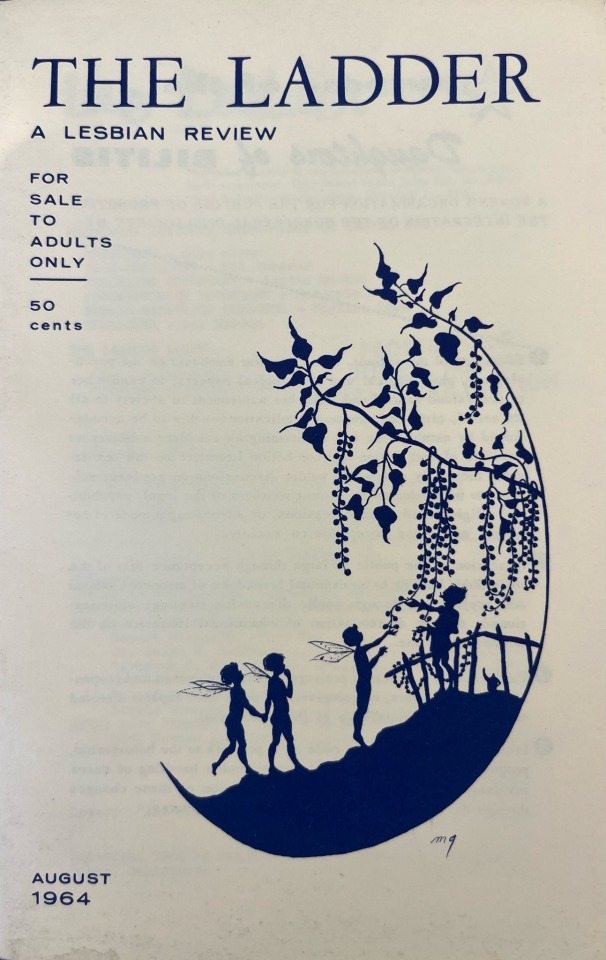
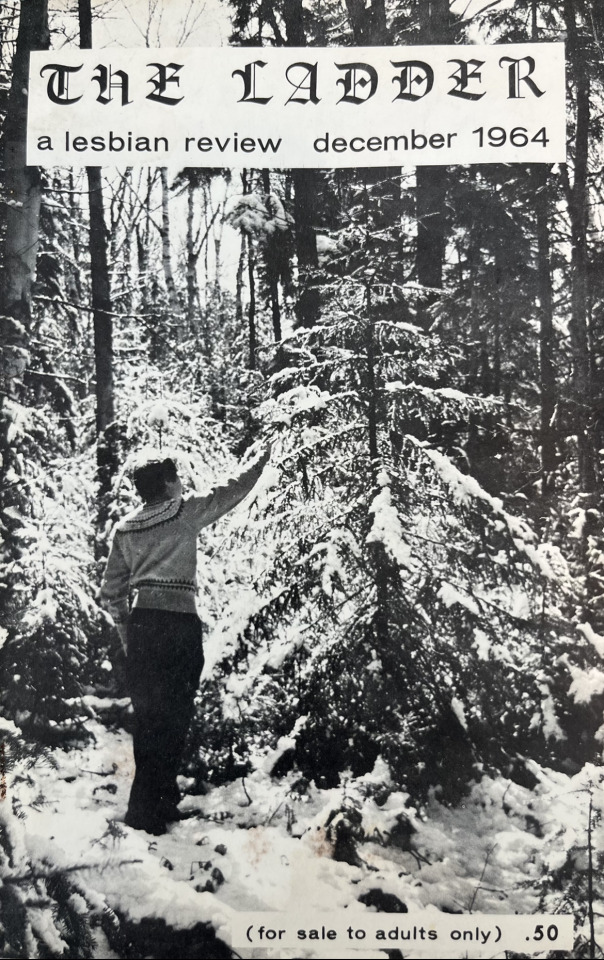

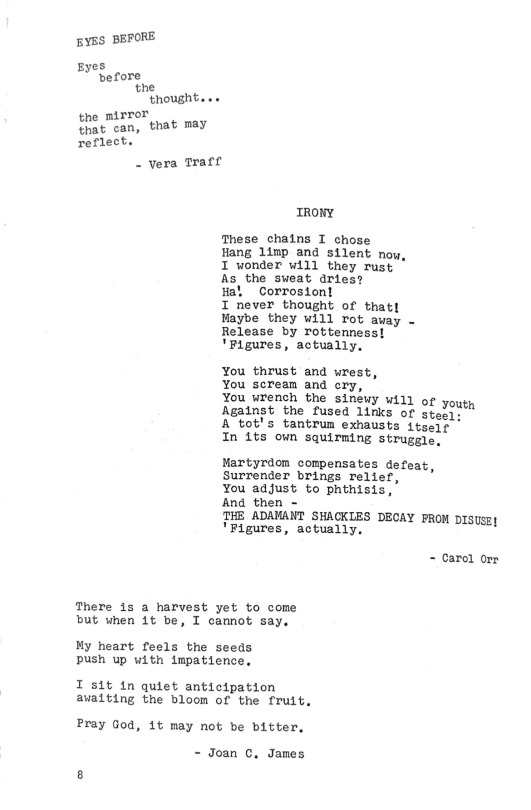
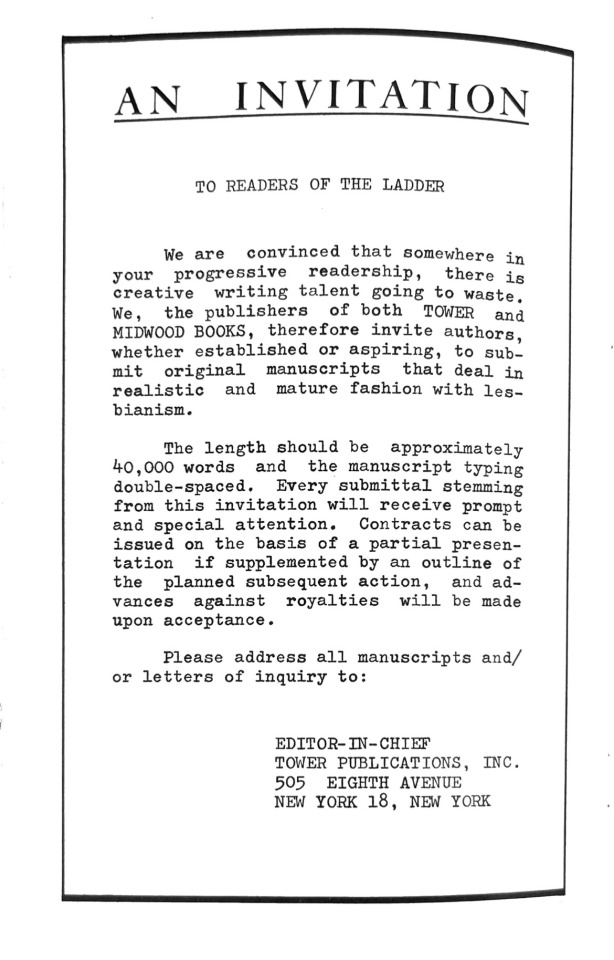
Starting off our new weekly series, Lesbian Magazines Through the Decades, with The Ladder, which is known to be the first Lesbian Magazine. Founded in 1955 In San Francisco, The Daughters of Bilitis formed and became the first Lesbian rights group in the United States. In 1956 they published their first copy of The Ladder. The Ladder worked as a Lesbian social club, a way for Lesbians to connect that was safer than going to gay bars that were frequently raided. The Ladder was a collection of Lesbian life at the time, consisting of short stories, poems, information on local events, and a section for readers to send in their responses. Covers were drawn in the beginning, and over time Lesbians began to come out from the shadows and play themselves on the cover. In a time when it was not safe to be out, The Ladder was a lifeline for Lesbians to be able to create community. A full collection of The Ladder can be found at the June L. Mazer Lesbian Archives.
#lesbian #lesbians #archives #lesbianarchives #lgbtq #wlw #westhollywood #junemazer #queer #women #community #pride #pridemonth #lesbianpride #gaypride #gay #lgbtqhistory #socialmedia #theladder #magazine #periodicals #daughtersofbilitis #dob #sanfransico #community #shortstories #poems #collection
6 notes
·
View notes
Photo

Daughters of Bilitis breakfast (left-to-right: Del Martin, Josie, Jan, Marge, Bev Hickok, Phyllis Lyon), San Francisco, California 1959. Photo from BoxTurtleBulletin.com, c/o GLBT History Museum. On October 19, 1955, sixty-one years ago today, a small group of lesbians in San Francisco held the first official meeting of the Daughters of Bilitis (DoB), the first organization dedicated to advancing the civil and political rights of lesbians in the United States. The founding members, including Phyllis Lyon, Del Martin, Rose Bamberger, Noni Frey, Rosemary Sliepen, and Marcia Foster, were couples that met through mutual friends and initially had little in the way of a plan for the new organization. Lyon later said of Bamberger’s original plan that, “she wanted it to be in people’s homes and she wanted it to be so we’d be able to dance...You couldn’t dance in the bars in those days. And she loved to dance. That was the whole idea behind it.” The name, Daughters of Bilitis, refers to Pierre Louys’ work “Songs of Bilitis,” an epic body of essentially lesbian erotic poetry; the group decided to pronounce it Bill-EE-tis because Bill-EYE-tis sounded too much like a disease. From there, DoB grew into the most important organization for lesbian rights in the early homophile movement: chapters from the national body participated in the earliest gay rights demonstrations at, among other places, the White House and Independence Hall; DoB produced pioneers including Lyon and Martin, Barbara Gittings, Kay Tobin, Ernestine Eckstein, and Jeanne Cordova; and the organization created the first monthly newsletter for American lesbians, “The Ladder,” which many referred to as “a lifeline.” DoB remained active until 1970, and “The Ladder” survived until 1972. For more, please see “Different Daughters: A History of the Daughters of Bilitis and the Rise of the Lesbian Rights Movement,” by Marcia Gallo. #lgbthistory #lgbtherstory #lgbttheirstory #lgbtpride #QueerHistoryMatters #HavePrideInHistory #DaughtersOfBilitis (at San Francisco, California)
#lgbthistory#haveprideinhistory#lgbtpride#queerhistorymatters#daughtersofbilitis#lgbttheirstory#lgbtherstory
63 notes
·
View notes
Photo

Members of the Mattachine Society and the Daughters of Bilitis (including Lilli Vincenz, second from left; Randy Wicker, back row in white jacket; Craig Rodwell, second from right; and Jack Nichols, far right) pose after picketing the Pentagon, Washington, D.C., July 31, 1965. Photo by Kay Tobin, @nyplpicturecollection. On July 31, 1965, fifty-one years ago today, following the first pickets by gay activists of the White House (April 17 & May 29, 1965), the United Nations (April 18, 1965), the Civil Service Commission (June 26, 1965), and Independence Hall (July 4, 1965), demonstrators picketed the Pentagon to protest federal treatment of homosexuals. Along with the pioneering activists listed above, those present also included Frank Kameny and Barbara Gittings (who was celebrating her thirty-third birthday). #lgbthistory #lgbtherstory #lgbttheirstory #lgbtpride #queerhistorymatters #haveprideinhistory #mattachinesociety #daughtersofbilitis (at The Pentagon)
#lgbthistory#haveprideinhistory#lgbtpride#queerhistorymatters#daughtersofbilitis#lgbttheirstory#lgbtherstory#mattachinesociety
72 notes
·
View notes